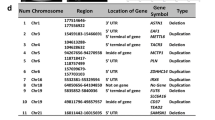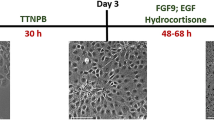Abstract
Systemic lupus erythematosus (SLE) is the prototype of complex autoimmune diseases characterized by the production of autoantibodies which results in widespread immunologic abnormalities and immune complex formation. The underlying etiology remains largely unknown. When progressing toward kidney failure, it is becoming a serious public health problem. Kidney transplantation is a feasible therapy, but significant limitations were existed, including shortage of donor organs and lack of funding. To find an alternative proposal for kidney replacement, the induced pluripotent stem cells (iPSCs) technology was adopted. We identified typical SLE patients. Lentiviral transduction of OCT4, SOX2, KLF4, and c-MYC, under feeder conditions, resulted in reprogramming of urine-derived renal tubular cells. We investigated the viability of iPSCs generation from patients with SLE by identification of totipotency and pluripotency. SLE patient renal tubular cells–derived iPSCs exhibited properties of human embryonic stem cells, including morphology, growth properties, alkaline phosphatase, expression of pluripotency, genes and surface markers, and teratoma formation. We demonstrated that generation of SLE-specific iPSCs from urine was not only the first time worldwide, but was feasible and efficient. IPSCs from SLE would provide convenient model to study disease pathogenesis, drugs screening, and gene therapy.





Similar content being viewed by others
References
Postal M, Costallat LT, Appenzeller S (2012) Biological therapy in systemic lupus erythematosus. Int J Rheumatol 2012:578641
Baddour JA, Sousounis K, Tsonis PA (2012) Organ repair and regeneration: an overview. Birth Defects Res C Embryo Today 96(1):1–29
Maherali N, Hochedlinger K (2008) Guidelines and techniques for the generation of induced pluripotent stem cells. Cell Stem Cell 3(6):595–605
Zhou T, Benda C, Duzinger S, Huang Y, Li X, Li Y et al (2011) Generation of induced pluripotent stem cells from urine. J Am Soc Nephrol 22(7):1221–1228
Thatava T, Armstrong AS, De Lamo JG, Edukulla R, Khan YK, Sakuma T et al (2011) Successful disease-specific induced pluripotent stem cell generation from patients with kidney transplantation. Stem Cell Res Ther 2(6):48
Hanly JG, Urowitz MB, Su L, Gordon C, Bae SC, Sanchez-Guerrero J et al (2012) Seizure disorders in systemic lupus erythematosus results from an international, prospective, inception cohort study. Ann Rheum Dis 71(9):1502–1509
Touma Z, Gladman DD, Ibanez D, Taghavi-Zadeh S, Urowitz MB (2011) Systemic Lupus Erythematosus Disease Activity Index 2000 Responder Index-50 enhances the ability of SLE Responder Index to identify responders in clinical trials. J Rheumatol 38(11):2395–2399
Song B, Niclis JC, Alikhan MA, Sakkal S, Sylvain A, Kerr PG et al (2011) Generation of induced pluripotent stem cells from human kidney mesangial cells. J Am Soc Nephrol 22(7):1213–1220
Takahashi K, Tanabe K, Ohnuki M, Narita M, Ichisaka T, Tomoda K et al (2007) Induction of pluripotent stem cells from adult human fibroblasts by defined factors. Cell 131(5):861–872
Yu J, Vodyanik MA, Smuga-Otto K, Antosiewicz-Bourget J, Frane JL, Tian S et al (2007) Induced pluripotent stem cell lines derived from human somatic cells. Science 318(5858):1917–1920
Aasen T, Raya A, Barrero MJ, Garreta E, Consiglio A, Gonzalez F et al (2008) Efficient and rapid generation of induced pluripotent stem cells from human keratinocytes. Nat Biotechnol 26(11):1276–1284
Giorgetti A, Montserrat N, Aasen T, Gonzalez F, Rodriguez-Piza I, Vassena R et al (2009) Generation of induced pluripotent stem cells from human cord blood using OCT4 and SOX2. Cell Stem Cell 5(4):353–357
Esteban MA, Wang T, Qin B, Yang J, Qin D, Cai J et al (2010) Vitamin C enhances the generation of mouse and human induced pluripotent stem cells. Cell Stem Cell 6(1):71–79
Cai J, Li W, Su H, Qin D, Yang J, Zhu F et al (2010) Generation of human induced pluripotent stem cells from umbilical cord matrix and amniotic membrane mesenchymal cells. J Biol Chem 285(15):11227–11234
Haase A, Olmer R, Schwanke K, Wunderlich S, Merkert S, Hess C et al (2009) Generation of induced pluripotent stem cells from human cord blood. Cell Stem Cell 5(4):434–441
Kim K, Doi A, Wen B, Ng K, Zhao R, Cahan P et al (2010) Epigenetic memory in induced pluripotent stem cells. Nature 467(7313):285–290
Hussein SM, Batada NN, Vuoristo S, Ching RW, Autio R, Narva E et al (2011) Copy number variation and selection during reprogramming to pluripotency. Nature 471(7336):58–62
Gore A, Li Z, Fung HL, Young JE, Agarwal S, Antosiewicz-Bourget J et al (2011) Somatic coding mutations in human induced pluripotent stem cells. Nature 471(7336):63–67
Cheng D, Lei L, Lu Z, Li Z, Wang H (2010) Induction and characterization of induced pluripotent stem (iPS) cells: a review. Sheng Wu Gong Cheng Xue Bao 26(4):421–430
Chen J, Liu J, Chen Y, Yang J, Liu H, Zhao X et al (2011) Rational optimization of reprogramming culture conditions for the generation of induced pluripotent stem cells with ultra-high efficiency and fast kinetics. Cell Res 21(6):884–894
Dai Y, Zhang L, Hu C, Zhang Y (2010) Genome-wide analysis of histone H3 lysine 4 trimethylation by ChIP-chip in peripheral blood mononuclear cells of systemic lupus erythematosus patients. Clin Exp Rheumatol 28(2):158–168
Javierre BM, Fernandez AF, Richter J, Al-Shahrour F, Martin-Subero JI, Rodriguez-Ubreva J et al (2010) Changes in the pattern of DNA methylation associate with twin discordance in systemic lupus erythematosus. Genome Res 20(2):170–179
Yeagy BA, Cherqui S (2011) Kidney repair and stem cells: a complex and controversial process. Pediatr Nephrol 26(9):1427–1434
Polo JM, Liu S, Figueroa ME, Kulalert W, Eminli S, Tan KY et al (2010) Cell type of origin influences the molecular and functional properties of mouse induced pluripotent stem cells. Nat Biotechnol 28(8):848–855
Tyndall A (2011) Successes and failures of stem cell transplantation in autoimmune diseases. Hematology Am Soc Hematol Educ Program 2011:280–284
Kobayashi T, Tanaka H, Kuwana H, Inoshita S, Teraoka H, Sasaki S et al (2005) Wnt4-transformed mouse embryonic stem cells differentiate into renal tubular cells. Biochem Biophys Res Commun 336(2):585–595
Griesche N, Bereiter-Hahn J, Geiger H, Schubert R, Baer PC (2012) During epithelial differentiation of human adipose-derived stromal/stem cells, expression of zonula occludens protein-1 is induced by a combination of retinoic acid, activin-A and bone morphogenetic protein-7. Cytotherapy 14(1):61–69
Vigneau C, Polgar K, Striker G, Elliott J, Hyink D, Weber O et al (2007) Mouse embryonic stem cell-derived embryoid bodies generate progenitors that integrate long term into renal proximal tubules in vivo. J Am Soc Nephrol 18(6):1709–1720
Batchelder CA, Lee CC, Matsell DG, Yoder MC, Tarantal AF (2009) Renal ontogeny in the rhesus monkey (Macaca mulatta) and directed differentiation of human embryonic stem cells towards kidney precursors. Differentiation 78(1):45–56
Acknowledgments
This work was supported by grants from the Key Project for Science and Technology of Shenzhen (project no. 201001006) and the General Program of National Natural Science Foundation China (30972741/C080701). This work was supported by the Guangzhou Institutes of Biomedicine and Health (in Guangzhou, China). We thank all members of laboratories for helpful suggestions, especially Dr. Qin Dajiang, and all the patients and healthy volunteers who participated in this study.
Conflict of interest
The authors declare that they have no conflict of interest.
Author information
Authors and Affiliations
Corresponding author
Rights and permissions
About this article
Cite this article
Chen, Y., Luo, R., Xu, Y. et al. Generation of systemic lupus erythematosus-specific induced pluripotent stem cells from urine. Rheumatol Int 33, 2127–2134 (2013). https://doi.org/10.1007/s00296-013-2704-5
Received:
Accepted:
Published:
Issue Date:
DOI: https://doi.org/10.1007/s00296-013-2704-5




